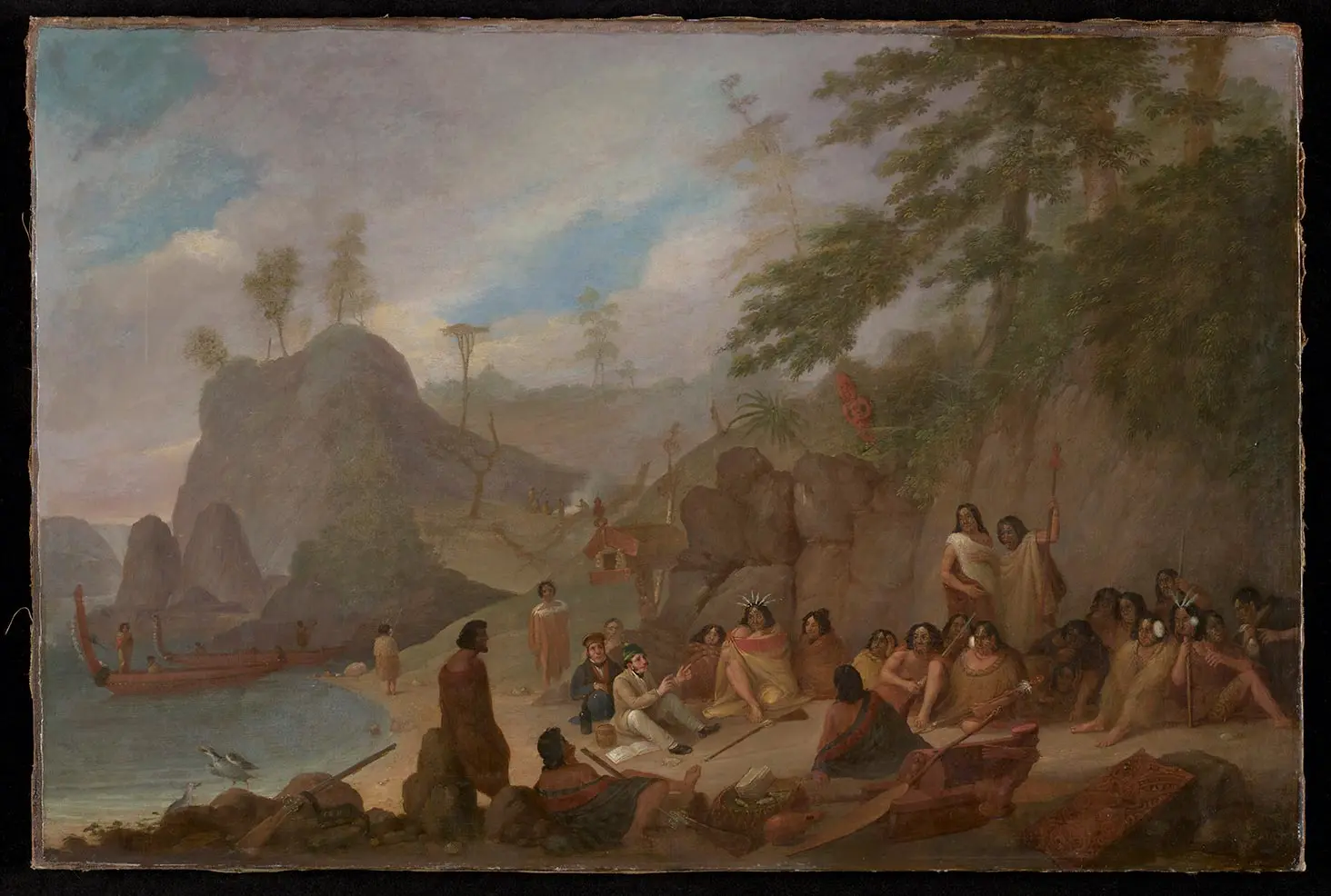Image credit: Meeting of the Artist and Hongi at the Bay of Islands, November 1827 by Augustus Earle. Ref: G-707 Alexander Turnbull Library.

Image credit: Meeting of the Artist and Hongi at the Bay of Islands, November 1827 by Augustus Earle. Ref: G-707 Alexander Turnbull Library.

In 1827, travelling artist Augustus Earle met with the great rangatira Hongi Hika (Ngāpuhi) in Te Pēwhairangi (Bay of Islands). Read about Earle’s painting of this meeting. Find out more, and explore our collections and curated resources.
Augustus Earle (1793–1838) was one of England’s first professional travel artists. He journeyed widely around the world in the 1820s, sketching people and scenes he encountered on many islands and continents. He later worked up his drawings into finished oil paintings for exhibition and sale. He also wrote and published illustrated accounts of his travels and adventures.
When Earle met the great Ngāpuhi rangatira Hongi Hika (1772–1828) in Pēwhairangi Bay of Islands in 1827, the chief was suffering from a severe bullet wound to the chest. Hongi had sustained the injury during one of the many engagements between his people and rival iwi over previous years, aided by English muskets, a trade in arms to which the weapons in the picture allude. Hongi died of the wound during Earle’s stay in New Zealand.
The supply of firearms to northern iwi was greatly boosted as a result of Hongi’s visit to England in 1820. There, he met King George IV and was presented with various gifts, which he later traded for muskets and ammunition. The ammunition box in the painting’s foreground, marked with a crown and the initials G. R. (Georgius Rex), is a reference to this visit.
In his book A Narrative of a Nine Months’ Residence in New Zealand in 1827, Earle describes the meeting, and Hongi’s appearance: ‘His look was emaciated; but so mild was the expression of his features, that he would have been the last man I should have imagined accustomed to scenes of bloodshed and cruelty. But … when he became animated in conversation, his eyes sparkled with fire … it only required his passions to be aroused to exhibit him under a very different aspect.’
Earle’s description of the scene and characters matches those depicted in the painting, but his representation does not show a man with ‘emaciated’ features. As art historian Leonard Bell has noted, Hongi’s image is derived not from a sketch of Hongi himself but rather that of another Ngāpuhi chief, Te Whareumu, under whose protection Earle was staying in Pēwhairangi.
The painting is actually a composite image synthesised from a number of sketches Earle made, showing various people and scenes from different times during his stay in Aotearoa. With artworks such as these the only visual images remaining to give insight into the people and places of the time, inaccuracies of this kind are all the more frustrating.
Story written by: Oliver Stead
Copyright: Turnbull Endowment Trust
Augustus Earle's Meeting of the Artist and Hongi at the Bay of Islands, November 1827 was one of Alexander Turnbull’s most important acquisitions. The library also holds a fine panoramic watercolour view of the Bay of Islands by Earle, purchased in 1977.
Explore the Alexander Turnbull Library collections further:
Topic Explorer has:
Many Answers has Musket Wars.
Want to share, print or reuse one of our images? Read the guidelines for reusing Alexander Turnbull Library images.
Tikanga ā-iwi:
Te whakaritenga pāpori me te ahurea
Te ao hurihuri
Ngā mahinga ohaoha.
Te Takanga o Te Wā (ngā hītori o Aotearoa):
Whakapapa
Tūrangawaewae.
Social sciences concepts:
Identity, culture, and organisation
Place and environment
Continuity and change.
Aotearoa New Zealand’s histories:
Māori history is continuous
Colonisation and its consequences.